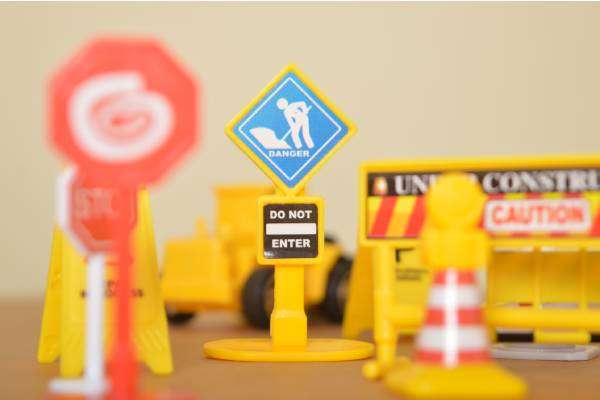1. Introduction to Anti-Collision Devices for Overhead Cranes:
Explore the basic concepts of anti-collision devices, their significance, and the role they play in enhancing safety in overhead crane operations.
In the dynamic world of industrial operations, safety stands as an unwavering priority. As technology continues to evolve, the quest for enhancing workplace safety has led to the development and implementation of sophisticated solutions, particularly in the realm of overhead crane operations. Among these, anti-collision devices emerge as beacons of innovation, designed to prevent accidents, reduce downtime, and revolutionize the landscape of crane safety.
Wrap up the introduction by reinforcing the pivotal role that anti-collision devices play in the safety and efficiency of overhead crane operations. Preview the subsequent blog posts that will delve deeper into the various facets of these devices, promising a comprehensive exploration of their impact on the industrial landscape.
2. Types of Anti-Collision Technologies for Overhead Cranes:
Delve into various technologies available for anti-collision systems, such as radar, laser, ultrasonic sensors, and RFID, discussing their features, pros, and cons.
a. Brief overview of the importance of safety in overhead crane operations. b. Introduction to the role of anti-collision technologies in preventing accidents and enhancing workplace safety.
a. Recap of the various types of anti-collision technologies discussed. b. Emphasis on the importance of choosing the right technology for specific crane operations. c. Final thoughts on the evolving landscape of anti-collision technologies for overhead cranes.
This structure should provide a comprehensive exploration of different anti-collision technologies for overhead cranes.
3. Real-Life Case Studies: Successful Implementation of Anti-Collision Devices:
Showcase instances where anti-collision devices have been effectively implemented, providing tangible examples of improved safety and productivity.
4. Cost-Effectiveness in Crane Operations:
Conduct a detailed cost-benefit analysis of integrating anti-collision devices, considering factors like reduced downtime, maintenance costs, and enhanced productivity.
5. Comparative Study: Different Anti-Collision Devices in the Market:
Compare and contrast various anti-collision devices available in the market, highlighting their unique features, specifications, and suitability for different crane setups.
6. Regulatory Compliance and Safety Standards:
Discuss how anti-collision devices align with industry safety standards and regulations, emphasizing the importance of compliance for crane operators.
7. Future Trends in Anti-Collision Technology for Overhead Cranes:
Explore emerging technologies and trends in anti-collision systems, discussing how advancements may impact the efficiency and cost-effectiveness of crane operations.
8. ROI Analysis: Evaluating Return on Investment for Anti-Collision Devices:
Break down the financial aspects of investing in anti-collision devices, considering the upfront costs, ongoing expenses, and long-term benefits.
9. Challenges and Solutions in Implementing Anti-Collision Systems:
Address potential challenges faced during the implementation of anti-collision systems and propose solutions to overcome these obstacles.
a. Overview of the growing importance of anti-collision systems in crane operations. b. Acknowledgment of the challenges associated with the implementation of these systems.
b. Recap of the identified challenges and proposed solutions. b. Emphasis on the importance of addressing challenges systematically for successful anti-collision system implementation.
This outline should help provide a comprehensive and insightful exploration of the challenges and solutions in implementing anti-collision systems for overhead cranes.
10. Training and Education: Ensuring Proper Usage of Anti-Collision Devices:
Highlight the importance of training crane operators and other personnel on the correct usage and maintenance of anti-collision devices to maximize their effectiveness.
11. Environmental Impact: Sustainability in Crane Operations with Anti-Collision Technology:
Discuss how the use of anti-collision devices can contribute to sustainable and environmentally friendly crane operations, considering factors like energy efficiency and reduced accidents.
12. Customer Testimonials: Experiences with Anti-Collision Devices:
Gather and share real-life experiences and testimonials from crane operators and businesses that have implemented anti-collision devices, providing insights into the practical benefits observed.
These blog topics cover a range of aspects related to anti-collision devices for overhead cranes, allowing for in-depth exploration and analysis.
Conclusion –
In wrapping up the cost-benefit analysis of anti-collision devices for overhead cranes, it becomes evident that investing in these safety technologies yields substantial advantages for businesses. The examination of both costs and benefits provides a comprehensive view of the impact that anti-collision devices can have on crane operations.
In conclusion, the cost-benefit analysis strongly supports the adoption of anti-collision devices for overhead cranes. Beyond the financial considerations, these devices contribute to a safer and more efficient working environment, aligning with the overarching goal of fostering a culture of safety and responsibility within industrial settings. Businesses that prioritize safety and invest in anti-collision technologies are likely to experience not only financial gains but also improved employee morale and overall operational excellence.










